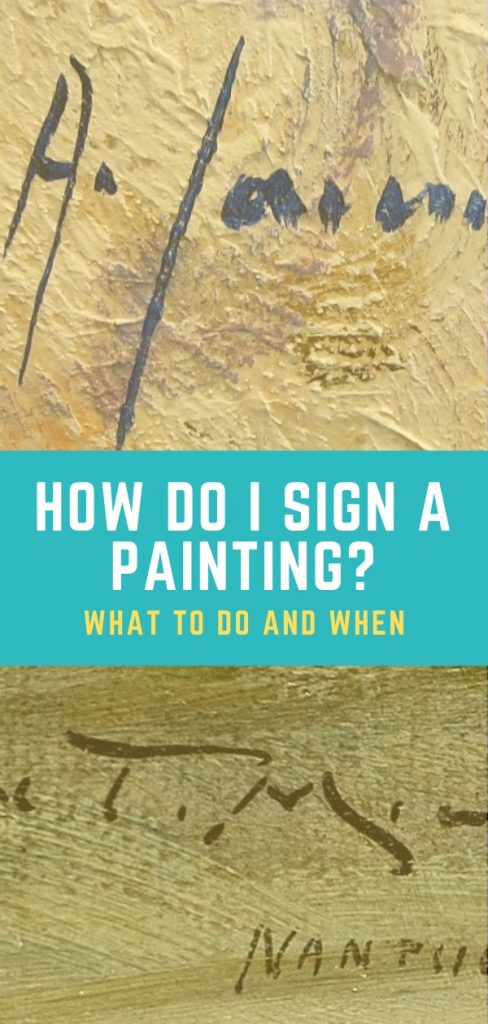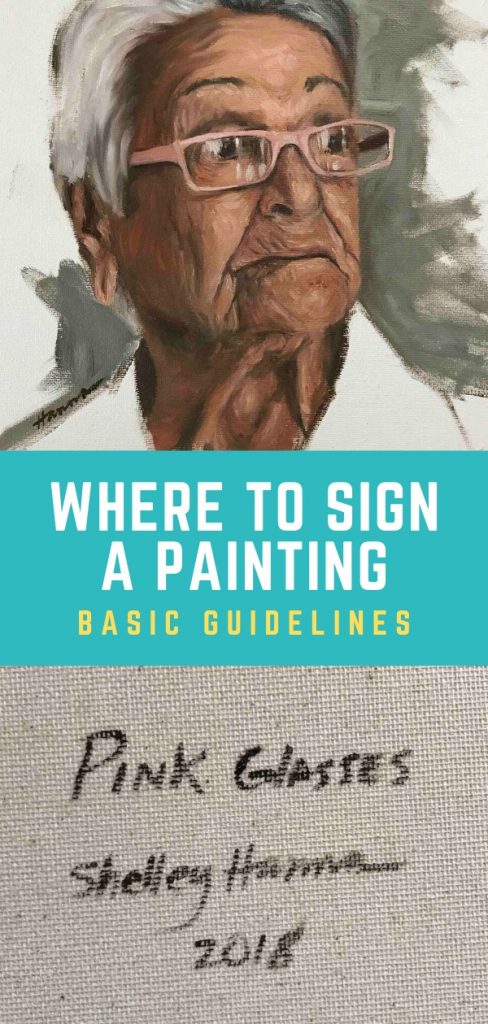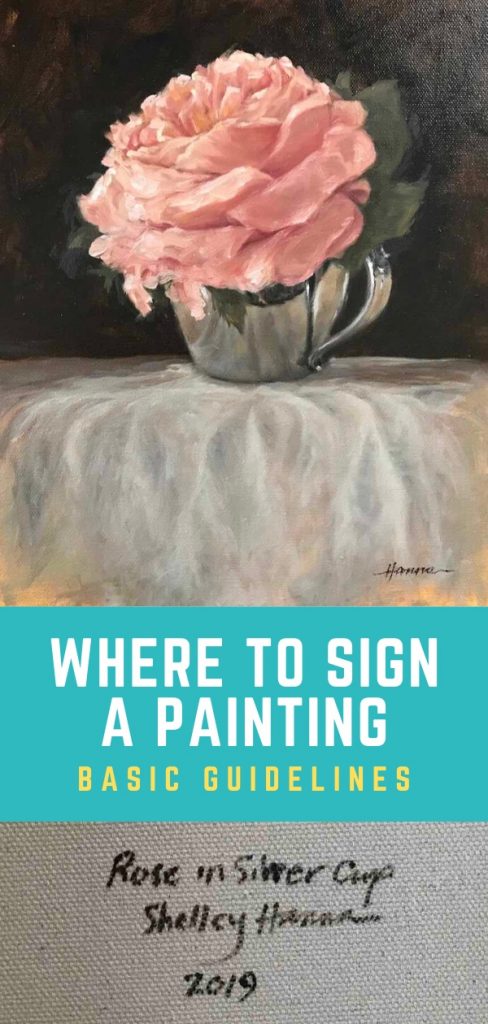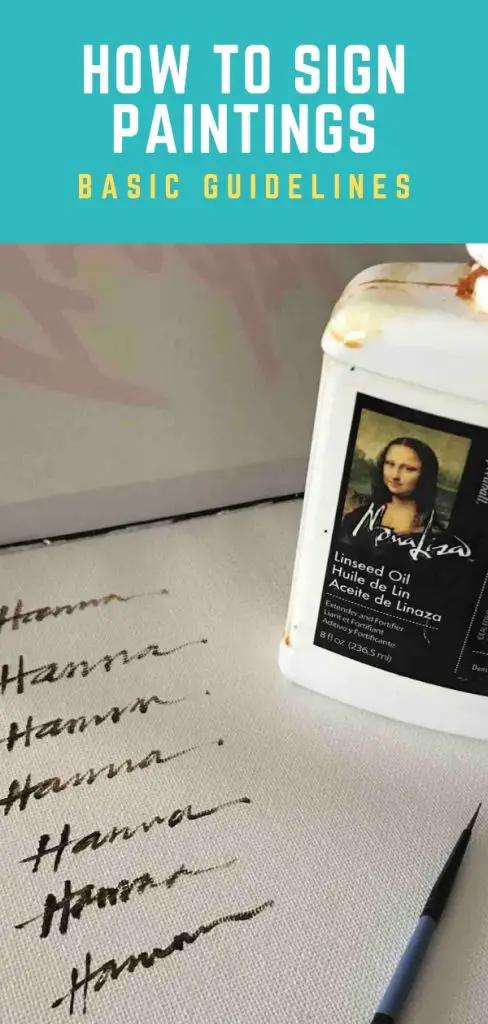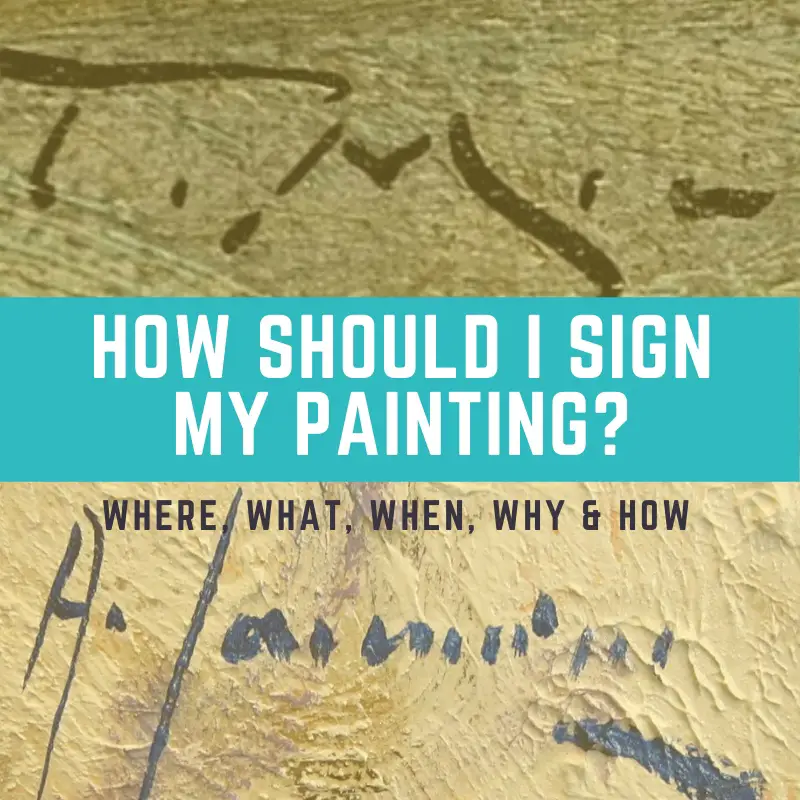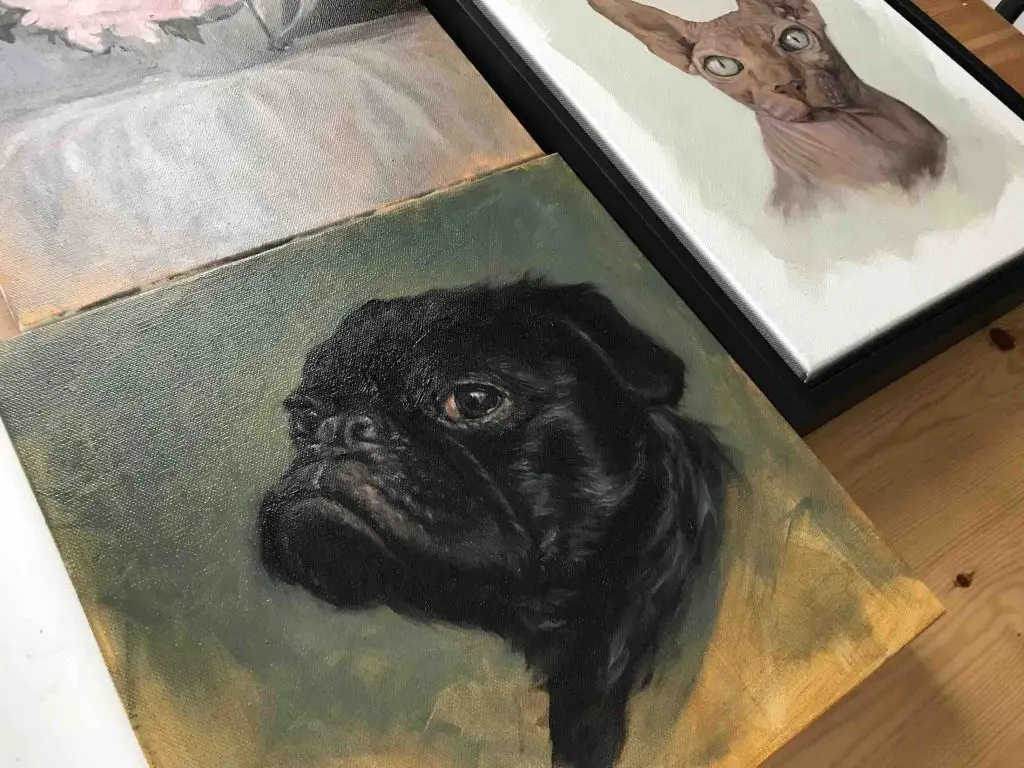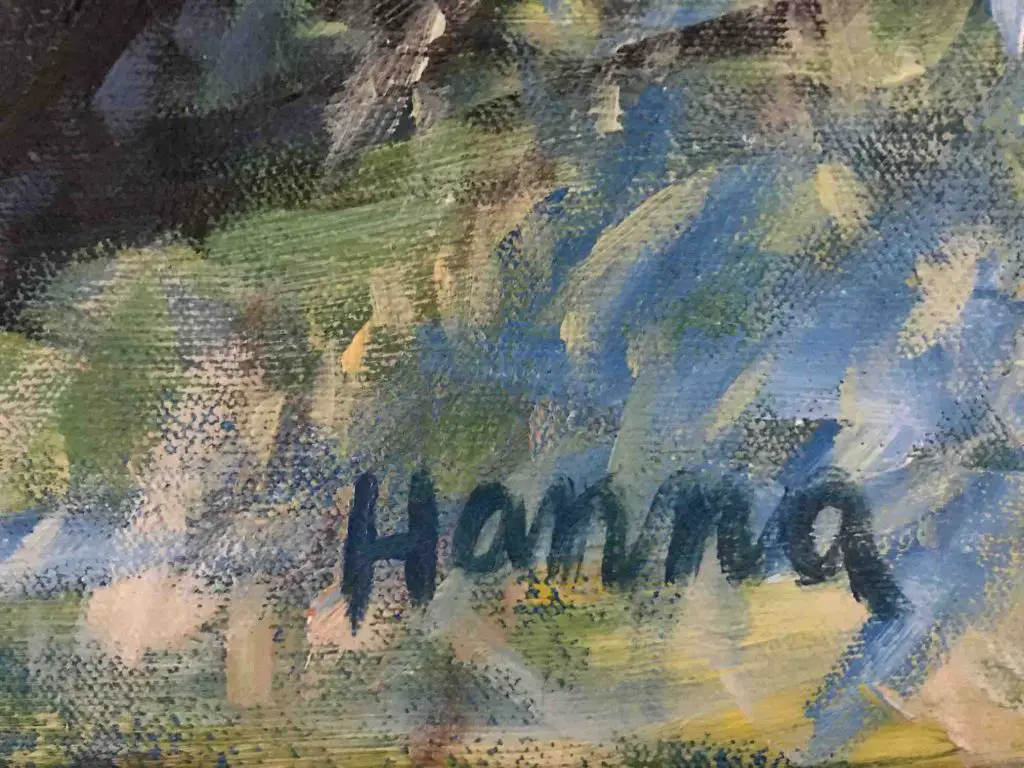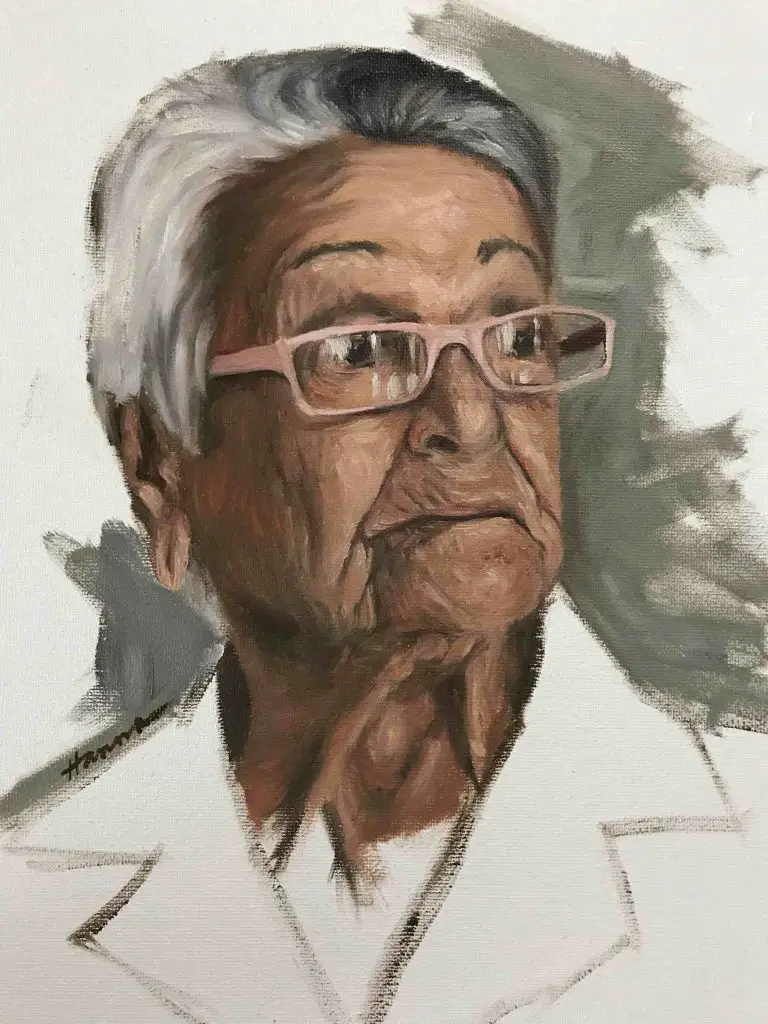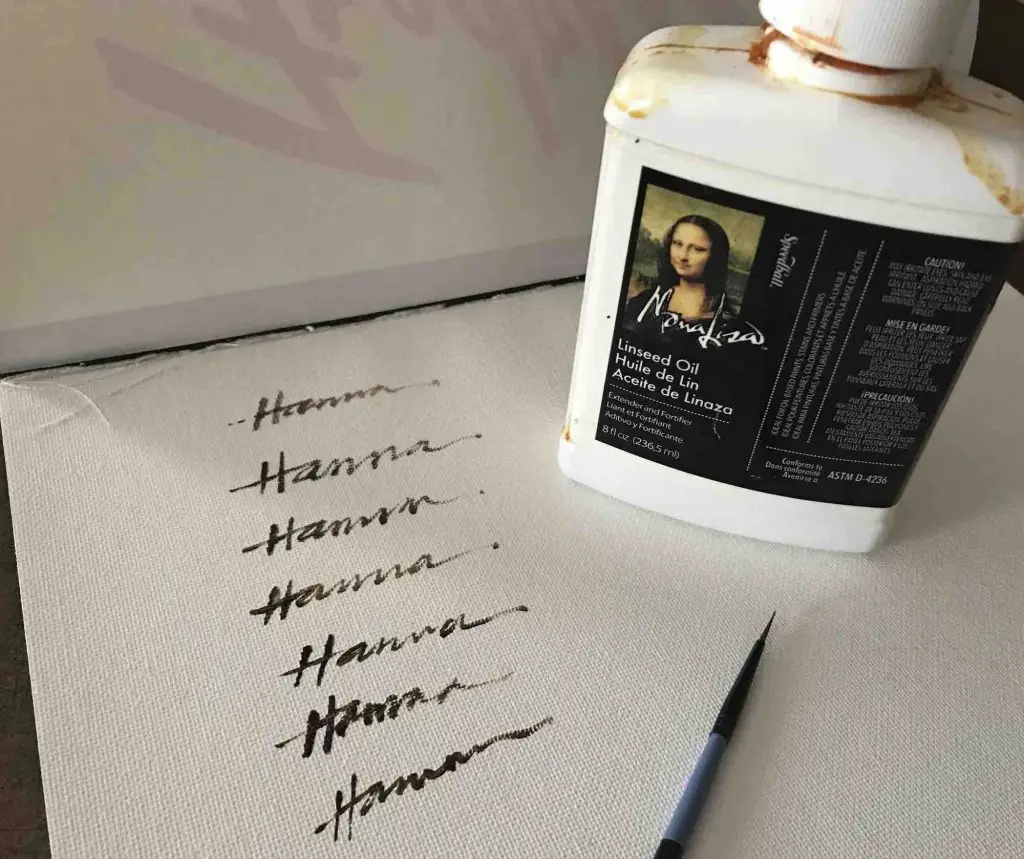Whether an artist should or shouldn’t sign their paintings seems to create a lot of confusion, especially for beginning artists. When do you sign it? Where do you sign it? Why should you sign it? These are all questions I’ll answer today.
Before getting into all the details, I’ll let you know a few basic things right now. An artist should always sign their paintings because it achieves 3 things:
- It creates authenticity
- Helps future collectors identify the work and
- Gives the artist a sense of completion
Of course, there is much more to it than the list above. There is also how to sign, where to sign, what to sign and when to sign along with some dos and don’ts. I’ll give you my thoughts on this below.
Commit To A Plan For Signing Your Painting
My reason for writing about this topic is a little selfish. I’ve been an artist for many years and when it comes to signing my work, I sort of freeze because I’m unsure exactly what to sign. I’ve done some research on the topic and have finally settled on what to do.
Having a plan for where and what to sign ahead of time and then being consistent is key. I wish I had known this years ago when I started painting. Signing consistency is not something I’ve been known for in the past, but that has all changed. Well, at least from now on it has changed.
Some Reasons Why Artists Don’t Sign Their Paintings
For a long time, I did sign my work on the front. And then for a long time, I didn’t sign my work on the front because I had noticed other artists were only signing on the back. This, more often than not, would irritate my collectors. They wanted a visible signature on the work of art. Looking back, I can see their point.
When you have collectors, they appreciate what you have created and your signature on the work gives a personal connection to the artist. It is an aspect of a relationship between you and your collectors. It also creates authenticity and uniqueness.
Here are a few of the reasons why artists don’t sign their work:
They don’t feel like it’s finished – Some artists just know through a feeling when a work is complete. Other artists don’t ever get that sense of their work being finished and may feel that if they sign it, they can’t continue to work on it. There is no rule on this. I’ve worked on many paintings after I’ve signed it. Don’t make it into a big deal. Just sign it.
They’re not sure if it’s good enough – Making art is emotional and causes many artists to feel vulnerable. I think nearly every artist wonders if their work is good enough. This is what is called the artist’s curse. When you are working on something, it is hard to “see” it and evaluate it objectively. You’ve put the work in. Sign it. It’s a part of your history.
If in a few months you still hate the painting, you can put it in the “burn” bin. But I’d encourage you to hang onto it. I’ve had paintings I’ve disliked for years, only to one day see them with different eyes and appreciate them. Your painting may be coming into this world through you for some collector that may relate to the painting in a way that you never can. Why not give them the opportunity to see it?
They don’t feel worthy – Worthiness may seem similar to the previous point on whether the work is good enough, but there is a difference. Some artists may feel their work is coming through them from a higher source of inspiration.
When this happens, it almost doesn’t feel like the work is theirs. Putting their name on it feels strangely wrong. It isn’t though. If this sounds like you, consider yourself a part of the creative process no matter how it came through you. You get to claim it.

I’ve been so used to looking at this painting without a signature that now it looks a little weird to me!
They don’t want to ruin the painting – I can certainly understand this fear. I’ve had a few signatures go very wrong and had to paint out that area and redo it. Practicing your signature ahead of time will help to eliminate the danger of ending up with a bad signature.
Signing the painting early in the process may be a good idea if this is your fear. Sign it as soon as you get the background in. I’ll talk more about this in the “When To Sign” section below.
What to Sign
This is only concerning signing the painting on the front. I’ll talk about what to put on the back later. I’ve signed my whole name, just my initials, my first initial and last name, my last name, and name and date. The only thing I haven’t tried is making a symbol. If you haven’t decided on a style yet, don’t worry. Famous artists like Picasso, Whistler, Matisse, and Kahlo revised their signatures over six times.

The lower right is a traditional place to sign a painting, just make sure to leave room for framing.
Over the last couple of years, I’ve tried to be more consistent and signed only my last name. Here are some of the reasons why I’m doing this:
It’s simple: No matter how much I practice painting an “S” for my first name, it always looks terrible. Simplifying it to my last name makes it easier and looks better to me. I put my full name on the back.
A date could cause some problems: Adding a date is something I’ve struggled with on and off for many years. I’ve added the date to the front of a lot of paintings in the past and it’s great for archival purposes, but if you are wanting to sell a work from a few years ago, collectors may wonder why it hasn’t already sold. They may think there is something wrong with it since nobody else has bought it already.
I tend to hold on to my paintings for a while before putting them out to the world for sale. If you are constantly putting your new work out there and sell work right away, this may not be an issue for you.
Where to Sign
Keep in mind that the painting may be framed, so the signature needs to be well inside the edges of the frame. I would recommend an inch to an inch and a half away from the edges.
There is no rule on where inside the painting to sign. I just would make sure the signature doesn’t detract from the focal point of the painting in any way. There are always exceptions. If you see yourself as the next Van Gogh, go for it.
Don’t Forget The Back Of The Painting
In addition to my last name on the front, I now put the name of the painting, my full name, and date on the back of the canvas. I also write the same information on the stretcher bars. This way, the painting can be easily identified even if it is taken off stretchers in the future. I usually sign with paint on the back of the canvas and then with a sharpie on the stretcher bars.
When to Sign
If you are painting wet-in-wet and get the background in, I’d encourage you to try out scratching in your signature with the other end of your brush right away. I’m seeing a lot of artists do this now with alla prima paintings done in one sitting. If you screw up, you can paint it out and try again. I also will sign with the brush end and a color that works with the overall color palette.
There is always a little anxiety signing after the painting is done because if you mess up the signature, you need to do extra work to paint over it or wipe it off which can create a mess.
Signing during or right after the painting is finished is preferred for archival purposes. If you become famous in the future, it will be much easier to authenticate the work if it is signed right away.
How to Sign
If I finish a painting and haven’t signed it while it’s still wet, I let the painting dry. I’ll then practice my signature several times with a small brush, a small amount of paint and a little linseed oil to make the paint flow. I’ll practice on my palette or a Fredrix Canvas Pad. Of course, this is for oil paint. With acrylics, you’d use acrylic, thinned a little with water.
I heard a tip that I thought was great for watercolor artists. Back when I attempted watercolors (which I was terrible at) I always signed in pencil or an archival ink pen. But another clever way to do it is to use a watercolor pencil and then go back over the signature with a very tiny brush that is slightly wet with water. This activates the watercolor from the pencil. I would practice this a few times first to see if it creates the look you are after.
Why It’s Important To Sign A Painting
- Authenticity – If your signature isn’t on the painting, who’s to say you painted it? It only makes sense that the creator of the painting signs the work.
- Identifying work in the future – It may seem obvious to you that the work is yours, but when it moves on to other hands and 50 years from now someone is trying to figure out who the artist is, your signature will be extremely important.
- Sense of completion – Even if you’re not sure if the work is finished or not, go ahead and sign it. It may just be the one element to help you feel the painting is complete. And if you still want to go back and refine a few things, there is nothing stopping you. It’s your painting.
What Not To Do When Signing A Painting
Don’t sign too large. A large signature can throw the entire composition off and put attention on the wrong part of the painting. If your ego is more important than the painting, and people are willing to pay for your ego, then by all means – sign as large as possible.
Don’t sign too close to the edge. In the painting above, I didn’t follow the rule to stay an inch to an inch and a half away from the edge. If I frame this painting, the signature will be partially covered up. No bueno.
Don’t use an overly ornate signature. I can see trying to make your signature unique so it’s recognizable, but overdoing it can start to look a little tacky. The signature needs to look professional and credible.
Don’t use a weird color. Sign with a color that fits within the color palette. The only artist that I can think of off the top of my head that got away with using an unusual color was Van Gogh. But he was a master of color and was able to make it work.
All of these “don’ts” are merely suggestions. It is up to the artist to make the final call.
Summary
Artists should sign their paintings. I don’t think there is any more to say.
Thank you for stopping by!
If you enjoyed this article and are interested in more posts like this, below are my other popular posts and painting tutorials. I’m also including the most popular oil painting video tutorial from my YouTube channel where you can watch me paint a pug. And guess what? I didn’t sign it in the video but have taken care of that now.
Impressionist Flower Painting PLUS How To Paint Silver & Fabric

